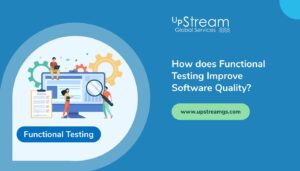Table of Contents
What is Functional Testing?
Typical Steps of Functional Testing
Best Practices for Functional Testing
Conclusion
If you have developed an application but want to verify its proper functionality, you need to conduct functional testing to ensure its smooth operation. Functional testing is a crucial aspect of software development that plays a vital role in ensuring the app performs according to specifications and meets user requirements.
In this blog, we will discuss the fundamentals of functional testing, explore the typical steps involved in the process, and discuss best practices to ensure effective functional testing methodologies.
What is Functional Testing?
Functional testing is a type of software testing that evaluates the system’s behavior against specified functional requirements. It focuses on testing an application’s individual features and functionalities to verify that they work as intended. Unlike non-functional testing, which assesses aspects like performance, reliability, and scalability, functional testing primarily concerns itself with what the system does.
Typical Steps of Functional Testing
Functional testing is a critical phase in the software development lifecycle to verify that a software application’s functions operate as expected. The typical steps involved in functional testing are as follows:
Requirement Analysis
- Understand the functional requirements of the software application.
- Identify the features and functionalities that need to be tested.
Test Planning
- Develop a test plan outlining the scope, objectives, and approach to functional testing.
- Define test scenarios and prioritize them based on criticality and frequency of use.
- Allocate resources, define roles and responsibilities, and establish timelines for testing activities.
Test Case Design
- Create detailed test cases based on the identified test scenarios and functional requirements.
- Each test case should specify input data, expected outcomes, preconditions, and test execution steps.
- Test cases should cover positive and negative scenarios, boundary conditions, and edge cases.
Test Environment Setup
- Configure the test environment to replicate the production environment as closely as possible.
- Install the necessary software, hardware, and infrastructure components required for testing.
- Ensure the test environment is stable, consistent, and isolated from external dependencies.
Test Execution
- Execute the prepared test cases according to the test plan.
- Input the test data, perform the test steps, and observe the actual outcomes.
- Record test results, including pass/fail status, actual outcomes, and any deviations from expected behavior.
- Capture screenshots, logs, and other artifacts to diagnose and resolve defects.
Defect Management
- Report any defects or discrepancies identified during test execution.
- Log defects in a defect tracking system, providing detailed information such as reproduction steps, severity, and priority.
- Collaborate with developers to investigate and resolve defects promptly.
- Conduct root cause analysis to identify underlying issues contributing to defects and prevent recurrence.
Regression Testing
- Conduct regression testing to ensure that recent changes or bug fixes have not introduced new defects or regressions.
- Re-run previously executed test cases to validate the stability and integrity of existing functionalities.
- Prioritize test cases for regression testing based on the impact of changes and the criticality of affected functionalities.
Test Reporting
- Generate test reports summarizing the testing activities, findings, and outcomes.
- Include metrics such as test coverage, defect density, pass rates, and test execution status.
- Provide stakeholders with insights into the quality of the software application and any risks or issues identified during testing.
Best Practices for Functional Testing
Below are the best practices to follow while conducting functional testing:
Clear Understanding of Requirements
Ensure testers thoroughly understand functional requirements to develop relevant test cases and ensure adequate test coverage.
Use of Automation
Leverage automation tools and frameworks to streamline test execution, improve efficiency, and facilitate regression testing.
Test Data Management
Properly manage test data to conduct meaningful functional tests. Use relevant and representative data sets to simulate real-world scenarios.
Prioritization of Test Cases
Prioritize test cases based on criticality, complexity, and frequency of use to optimize testing efforts and resources.
Collaboration and Communication
Foster effective collaboration between cross-functional teams, including developers, testers, and business stakeholders, to ensure alignment and shared understanding of requirements and testing objectives.
Continuous Learning and Improvement
Encourage a culture of continuous learning and improvement within the testing team. Share insights, lessons learned, and best practices to enhance testing methodologies over time.
Risk-Based Testing
Identify and prioritize testing efforts based on the risks associated with different functionalities and areas of the application.
Modular Testing
Break down the application into smaller, manageable modules for testing. This approach allows for more focused testing efforts and easier identification of defects.
Regression Testing
Perform regular regression testing to ensure that recent changes or enhancements do not adversely affect existing functionalities.
Documentation and Reporting
Maintain comprehensive documentation of test cases, test results, and defects. Generate test reports to provide stakeholders with insights into the quality of the software and any risks or issues identified during testing.
Conclusion
Functional testing plays a pivotal role in ensuring the quality and reliability of software applications. By following established testing processes and best practices, organizations can identify and rectify functional defects early in the development lifecycle, improving product quality, enhancing user satisfaction, and reducing time-to-market.
Embracing a systematic approach to functional testing empowers teams to deliver robust and high-performing software solutions that meet the evolving needs of users and stakeholders.







